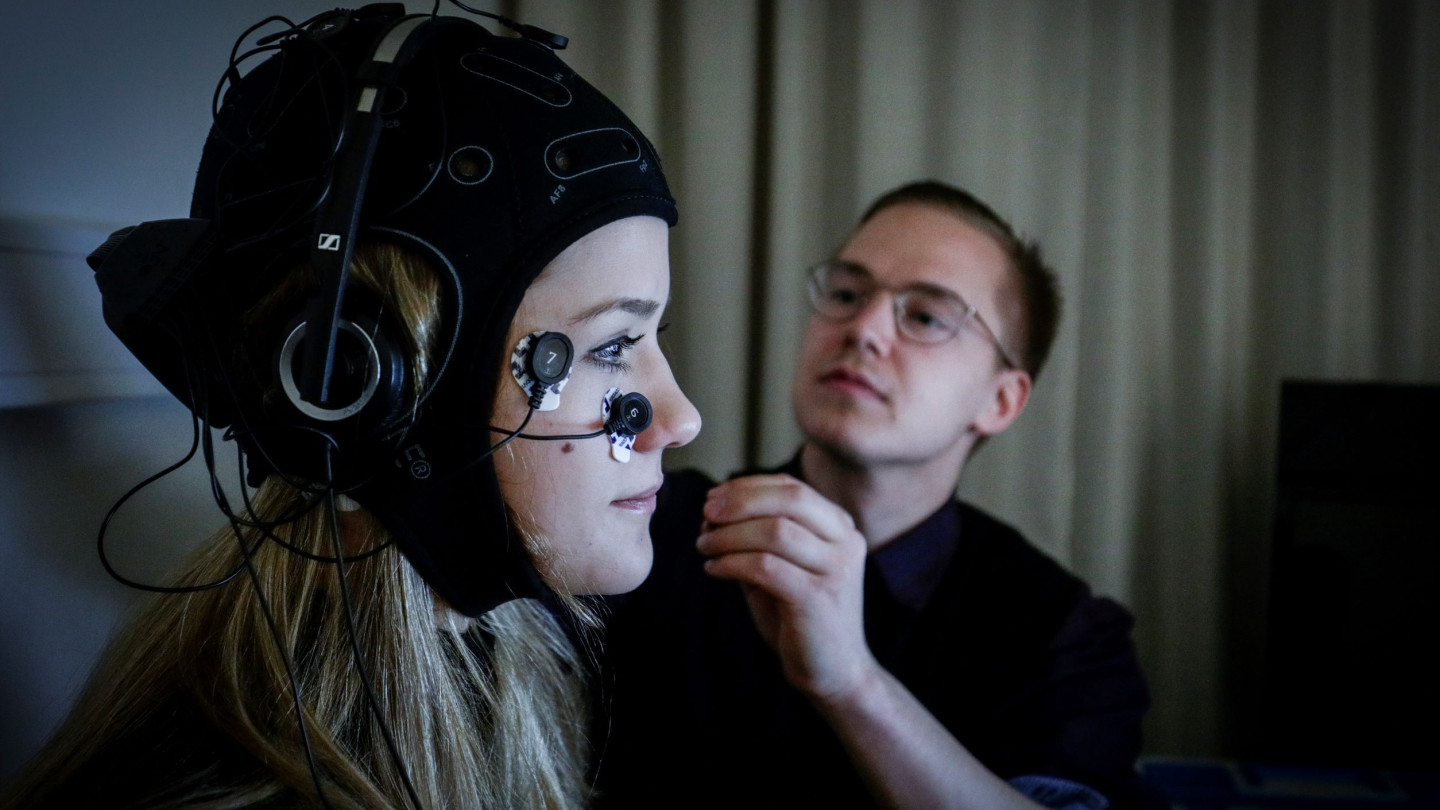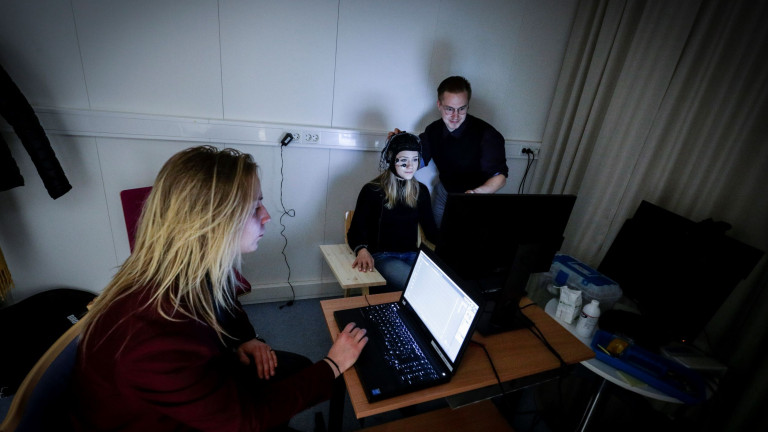
Jyväskylä Centre for Interdisciplinary Brain Research – A base for top research
Jyväskylä Centre for Interdisciplinary Brain Research represents a new wave in its field. The various research topics of the Centre are connected to human life and daily activities. Cutting edge technology helps researchers investigate how children’s linguistic and mathematical skills develop as they are growing up or how different brain areas react to stimuli.
The Centre for Interdisciplinary Brain Research, CIBR, was established in 2011 to bring together the brain research pursued in different fields at the University of Jyväskylä. The vision about an internationally remarkable research apparatus came true – the Centre has now world-class infrastructure that enables wide and significant research and multidisciplinary cooperation.

”CIBR provides appropriate circumstances for research, maintains the research infrastructure and promotes its joint use. The Centre provides technical training in the use of the devices, but we are also involved in education in the field of brain research and neuroscience – an example of this is the new doctoral programme in cognitive neuroscience”, states the Director of the Research Centre, Associate Professor Tiina Parviainen.
CIBR seeks to enhance the societal influence of brain research and to enable top-class brain research at the University of Jyväskylä. These goals have also been largely achieved, as the Centre is pursuing world-class research, also according to the Academy of Finland indicators for scientific excellence.
The now ten-year-old Centre for Interdisciplinary Brain Research was not built without any pre-existing basis, since neuropsychology research at the University of Jyväskylä can be traced long back in history. Neuropsychology research came originally to Central Finland along with Niilo Mäki (1902–1968) already in the late 1930s. The construction of a research laboratory advanced in great leaps in the 1960s, led by Professor Martti Takala (1924–2012).
Shared infrastructure for the University community
CIBR wants to be a researcher community for all researchers pursuing brain research at the University of Jyväskylä. The interdisciplinary community offers opportunities for various forms of cooperation.
Although CIBR is administratively a part of the Department of Psychology, Parviainen underlines the multidisciplinary character of the Centre and research network. Parviainen hopes that the University community is aware of the research infrastructure and its potential for research involving different fields. Where needed, the laboratory and the measuring apparatus do serve researchers from all fields. New initiatives, such as cooperation with Information and Software Engineering education, raises interest among the researcher community.
”It would not be reasonable to make the expensive infra and special expertise available to one faculty only. Knowledge should be accessible to the whole University community.”
Tools and support for neuroscience research
At present, the main lines of research at CIBR include learning and development, learning difficulties, the effects of physical activity and exercise as well as mental well-being and related interventions. The studies draw on, among other things, the University’s methodological expertise of information technology and mathematical modelling. The Centre’s own infrastructure includes a set of measuring apparatus as well as various devices intended for brain stimulation.

EEG, or electroencephalogram, measures electric activity in the brain. Precisely located electrodes attached to a subject’s head react to the neural signals of brain cells. The electrodes are often fixed to a special cap, which helps the placement and speeds up the preparations for measurement. EEG makes it possible to observe reactions to various stimuli such as sounds or pictures, for example, and also to follow the development of the brain.
The EEG laboratories are located in the Kärki building at Mattilanniemi, but sometimes some devices have also been transported outside the campus area. The devices have been used to measure EEG during a learning session in a flight simulator, for example. At the beginning of next year, the smallest electrode caps of the laboratory will be placed on the heads of newly-born babies, in order to collect research data for a longitudinal study on the development of mathematical skills.
The massive MEG, or magnetoencephalography, device is functionally kin to the EEG caps. MEG measures weak magnetic fields caused by brain activity. By this means, it is possible to study at a millisecond level the activation of different areas of the brain and how such activation spreads or shifts from one area to another. Although the apparatus is used mainly for scientific research, it can also be used for the purposes of clinical medicine: it can be used, for example, to locate the originating point of an epileptic seizure.
One of the three MEG-devices in Finland is in Jyväskylä
Acquiring the MEG laboratory as part of the brain research infrastructure of the University of Jyväskylä in 2015 was great news – and a million-level investment. The walls of the protected chamber weigh several tons keep the sensitive sensors of the massive apparatus isolated from any interfering signals from outside. In Finland, the only two other devices of this kind are located in Meilahti Hospital and at Aalto University, a predecessor of which, Helsinki University of Technology, provided auspices for the development of the MEG apparatus in the first place. The apparatus was developed at the beginning of the 1970s, and its global market leader is still based in Helsinki.

Brain activity can not only be measured but also artificially stimulated by means of various devices. Different psycho-physiological reactions between brain and other bodily functions can be measured, for example, by looking at the rhythms of the heart and respiration, sweating of hands, or involuntary reflexes.
Studies also take advantage of other research equipment available at the University, such as those belonging to the research infrastructure of musicology, sport biology, and the Faculty of Information Technology. Cooperation has also opened possibilities for the use of applicable research facilities outside the University, such as magnetic brain imaging at Nova Hospital.




